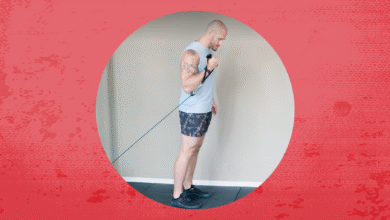Pay People, and They Will Go to Cardiac Rehab

—
Financial rewards increase participation in guideline-recommended programs
by
Nicole Lou,
Senior Staff Writer, MedPage Today
July 22, 2024
It might take giving people money directly for them to participate in cardiac rehabilitation, a randomized trial showed.
Eligible patients in Vermont of lower socioeconomic status had cardiac rehab adherence rates shoot up if instead of usual care (11%), they were offered financial incentives to attend rehab (42%; adjusted OR 5.1, 95% CI 1.5-16.7) or case management plus financial incentives (62%; adjusted OR 13.2, 95% CI 4.0-43.5).
In contrast, peers who were assigned case management alone had no significant benefit in terms of adherence to cardiac rehab (25%; adjusted OR 2.6, 95% CI 0.8-9.0), according to study authors led by Diann Gaalema, PhD, experimental psychologist of University of Texas Medical Branch in Galveston, reporting in JAMA Internal Medicine.
Based on the present work, cardiac rehab is no exception to the settings where financial rewards can help improve health-related behaviors. The study let each individual win a maximum of $1,220 total over the course of the study.
Cardiac rehab is usually a structured program of supervised exercise and risk factor control that is guideline-recommended for people after myocardial infarction or coronary revascularization. Although known to be clinically beneficial, such rehab is severely underutilized, with the existing literature suggesting that fewer than one in three eligible people attend a single session — the lack of payment for these programs often decried as the main barrier.
“This process is time consuming and costly, especially following an often lengthy hospitalization. Financial barriers to CR [cardiac rehab] may include the out-of-pocket costs associated with attending CR sessions (e.g., copayments, coinsurance), costs associated with travel to and from CR sessions, and lost wages due to attending CR sessions during work hours,” explained Havisha Pedamallu, BA, a student at Northwestern University Feinberg School of Medicine in Chicago, and health outcomes researcher Michael Thompson, PhD, MPH, of University of Michigan in Ann Arbor, in an accompanying editorial.
Cardiac rehab is especially out of reach for low-income people who could benefit from it. Study authors noted that people with dual Medicare-Medicaid enrollment — likely to be of low socioeconomic status — had a cardiac rehabilitation participation rate of under 7% in one study. Dual-eligible patients were also shown to have disproportionately sharp declines in cardiac rehab participation during the COVID-19 pandemic, which also saw rehab centers close up shop nationwide.
In practice, clinicians would be stepping into an ethical and regulatory minefield if they tried to directly pay patients to attend and adhere to cardiac rehab, Pedamallu and Thompson suggested.
It may be more realistic to relieve patients another way, by eliminating cost-sharing for attendance — but that will be up to the lawmakers, they said.
“Recent changes to the Affordable Care Act now require private health plans to cover evidence-based preventive services at no cost to patients in addition to Medicare and Medicaid plans. Expanding the definition of preventive services to include CR would eliminate the cost-sharing burden for patients, but would also require federal legislation that is challenging to obtain,” according to the editorialists.
“Although large-scale implementation of such a program would face challenges, other strategies by both clinicians and payers should be considered if we are to improve CR participation in patients with lower [socioeconomic status] and other patient populations more broadly,” the duo added.
Gaalema’s team conducted the randomized trial by enrolling patients from University of Vermont Medical Center and two community hospitals in the state. From 2018 to 2022, the authors sought participants with lower socioeconomic status who were rehab-eligible by way of a diagnosis of myocardial infarction, coronary artery bypass graft, percutaneous coronary intervention (PCI), heart valve intervention, or stable systolic heart failure.
The study protocol had people randomized 2:3:3:3 to usual care, case management starting in-hospital, financial incentives, or both interventions. The interventions lasted for 4 months and were described as:
- Usual care: referring patients to their choice of cardiac rehab program without further intervention
- Case management: assignment to a trained person to help complete initial health assessments, plan and coordinate care, and conduct weekly calls discussing the patient’s behavioral goals
- Financial incentives: giving people gift cards and store credit for completing the rehab orientation and each session (with rewards escalating from $10 to $40 per session)
Out of 314 people asked to participate, 209 agreed to do so and were eligible for randomization, and ultimately 192 completed the study and were included in this report.
The investigators stressed that this was a relatively high-risk population with very low cardiorespiratory fitness. The group was 35% women, nearly 85% white, and had a mean age of 58 years. Current smokers made up of 44% of the group, and over half of people were eligible for cardiac rehab because of PCI. There were no clinically meaningful baseline differences between groups.
Notably, nearly all participants were on Medicaid. About a quarter completed college or an advanced degree. Approximately one in four screened positive for depression, and at least one in three came out of cognitive tests with scores indicating some cognitive impairment.
The interventions lasted for 4 months and had high uptake in the trial, according to Gaalema’s group: 82% in the financial incentives groups earned at least some reward, while 93% of those assigned to a case manager completed the initial needs assessment and the weekly calls had a 71% participation rate.
Participants were ultimately assessed on whether they adhered to cardiac rehab, defined as completing at least 30 sessions.
Gaalema and colleagues said that with this report, they replicated previous data on using financial incentives to boost cardiac rehab adherence.
However, the trial had the caveats of not being powered to examine clinical outcomes and having been disrupted by COVID-19 shutdowns, the authors cautioned.
-
![author['full_name']](https://clf1.medpagetoday.com/media/images/author/nicoleLou_188.jpg)
Nicole Lou is a reporter for MedPage Today, where she covers cardiology news and other developments in medicine. Follow
Disclosures
The study was supported by an award from the National Heart, Lung, and Blood Institute.
Gaalema reported grants from the NIH. One co-author reported grants from the National Heart, Lung, and Blood Institute. No other disclosures were reported.
Thompson reported grants from the Agency for Healthcare Research and Quality.
Pedamallu had no disclosures.
Primary Source
JAMA Internal Medicine
Source Reference: Gaalema DE, et al “Improving cardiac rehabilitation adherence in patients with lower socioeconomic status: A randomized clinical trial” JAMA Intern Med 2024; DOI: 10.1001/jamainternmed.2024.3338.
Secondary Source
JAMA Internal Medicine
Source Reference: Pedamallu H, Thompson MP “Eliminating financial barriers to cardiac rehabilitation” JAMA Intern Med 2024; DOI: 10.1001/jamainternmed.2024.3351.



